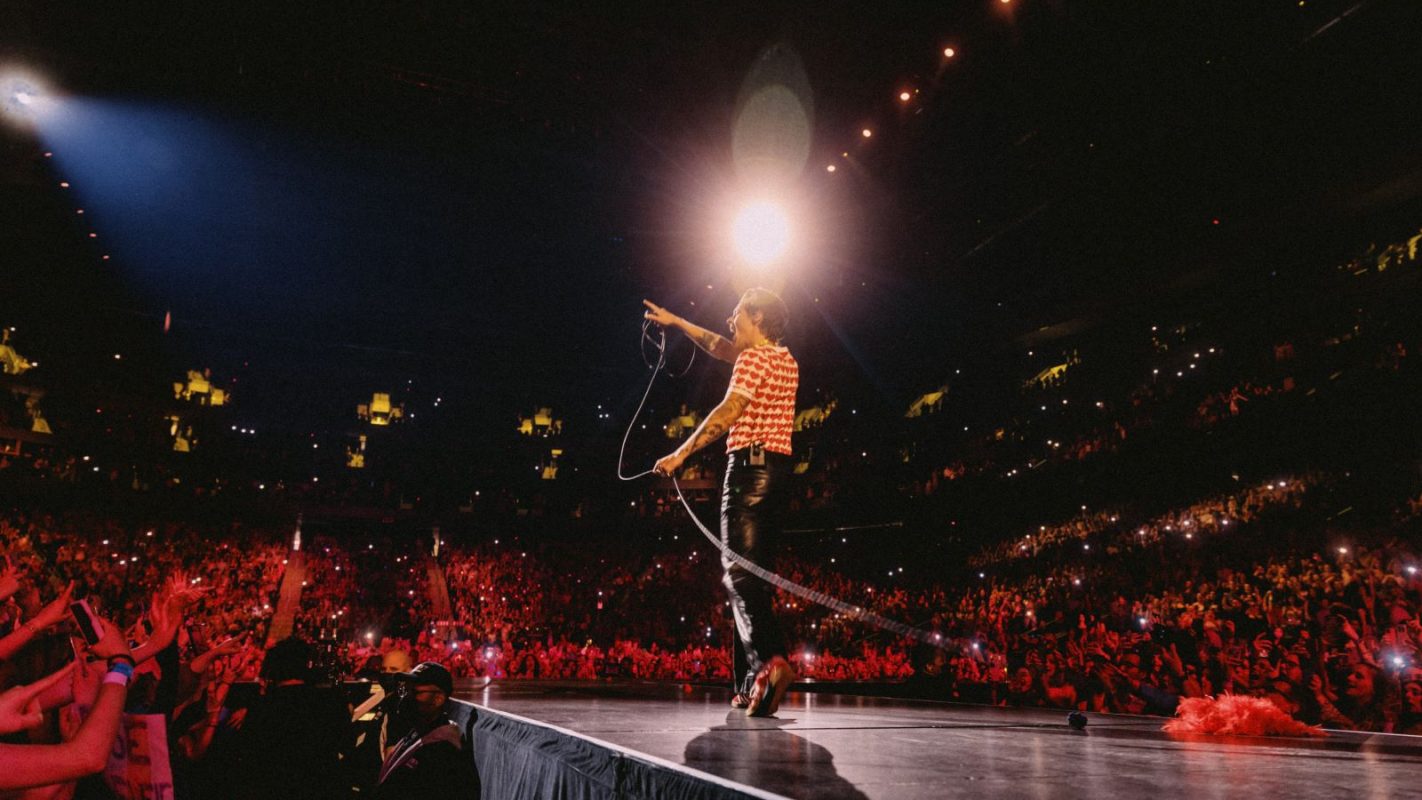Archivado en:
Harry Styles •
What’s going on with the people? Why are they attacking artists by throwing things directly at their faces on stage? In recent weeks, there has been a wave of attacks—there’s no other word for it—on singers during their concerts. Harry Styles has been the latest victim to be hit in the face with an object during a concert. The British artist was performing at the Ernst Happel in the Austrian capital when a small object (a coin or a lighter) struck his eye. He had to leave the stage to recover.
Harry joins the long list of artists who are being hit with objects during their concerts. Bebe Rexha was hit by a mobile phone; Kelsea Ballerini had to stop her show because she was hit in the face by a lighter and Ava Max was slapped in the middle of a concert by a spontaneous person.
Other artists like Lil Nas X and P¡nk have also come close to being hit by thrown objects. Luckily, their attackers had worse aim. It’s true that fans have always thrown objects onto the stage, but always away from the musicians. Flags, plush toys, letters, or flowers are just some of the objects that have been traditionally thrown at shows. And what do they have in common? None of them can cause harm.
What Goes Through a Fan’s Mind to Want to Hit their Idol?
It’s inevitable to wonder what goes through someone’s mind to want to physically assault an artist with an object during a concert. «The word ‘fan’ comes from ‘fanatic.’ Fanatics have an obsession with what they believe in, what they follow. They are excessive followers. We have seen this in the world of religion, in the world of politics, or in other types of beliefs. We have witnessed how fanatics have harmed themselves or others because of that fanaticism,» begins psychologist Paula Sánchez Alarcón in an interview with LOS40.
She continues explaining, «In the world of music, this is happening because the artists themselves are becoming these admirable figures to follow and idolize. And ultimately, the personality of a fanatic includes having an easily frustrated way of being, having complicated personal histories and emotional deficiencies. That leads to extreme emotional dysregulation. This excessive and uncontrolled emotional dysregulation leads them to commit these criminal acts that harm others, including the people they admire.»
To conclude, Paula explains that when they see those individuals they feel devotion for on stage, there is a dysregulation of emotions: «I suppose that at that moment, throwing an object is the result of excessive and uncontrollable emotional intensity within their own bodies. It’s a way to get closer, to try to release everything they feel.»
How Can Artists Ensure Their Safety when They Go on Stage?
Considering that this type of behavior is spreading on stage, we wanted to know what precautions can be taken at concerts to keep the artists safe and sound. For that, we spoke with Juan Carlos Ruiz, the security director of the WiZink Center in Madrid, one of the most relevant concert venues in the country, with extensive experience in hosting music events:
«In most concert venues, the access with blunt objects that could be thrown, either among the audience or towards the stage, is prohibited,» he begins to explain.
When, unfortunately, these types of attacks happen to artists, the protocol is always the same: «In this situation, if the artist suffers any physical harm, the concert will be stopped, and they will be immediately attended to by the medical services of the venue. Meanwhile, messages will be broadcasted through the public address system criticizing any violent behavior and urging everyone to refrain from throwing anything onto the stage.»
Additionally, Juan Carlos tells us that it’s easy to identify the person who threw the object: «Sometimes it can be done through the people around them, who end up reproaching them, and other times it can be done through the trajectory of the object. It is feasible for them to be identified.»
What Can Be Done if These Cases Continue to Increase?
Juan Carlos himself told us that for now, the same rules apply: «On occasions and depending on various factors, stricter security measures are taken, such as the prohibition of additional items, wallets with chains, belts, and even lighters.»
If measures had to be taken to prevent these practices from happening, Juan Carlos mentions that the «most preventive» measure would be separating the audience from the stage «by adding additional security personnel at the front stage.»
Those individuals who are allowed to be at the front stage, such as photographers and authorized personnel, usually have security accompanying them to prevent them from throwing anything onto the stage. Beatriz de la Guardia, the director of communications at Planet Events, explains the protocol:
«The press officer from the promoter, in this case, myself, is accompanied by security personnel from the venue to ensure compliance with the regulations: no flash photography or any requests made by the artist. Normally, photographers are located in the pit during this time, and TV cameras are at the FOH (Front of House), where there is always security personnel. The latter can capture sound from the soundboard if the artist permits it; otherwise, they will capture ambient sound. In venues like the WiZink Center in Madrid, they also have to go through a security check (metal detector) with their equipment when entering.»
Let’s hope that concerts are safe spaces for everyone: artists and the audience alike.
Article originally published by Alberto Palao on LOS40.com.
![]() USA
USA
![]() ES
ES
![]() MX
MX
![]() CO
CO
![]() CH
CH
![]() PA
PA
![]() ARG
ARG
![]() CR
CR
![]() GUA
GUA
![]() EC
EC
![]() RD
RD

